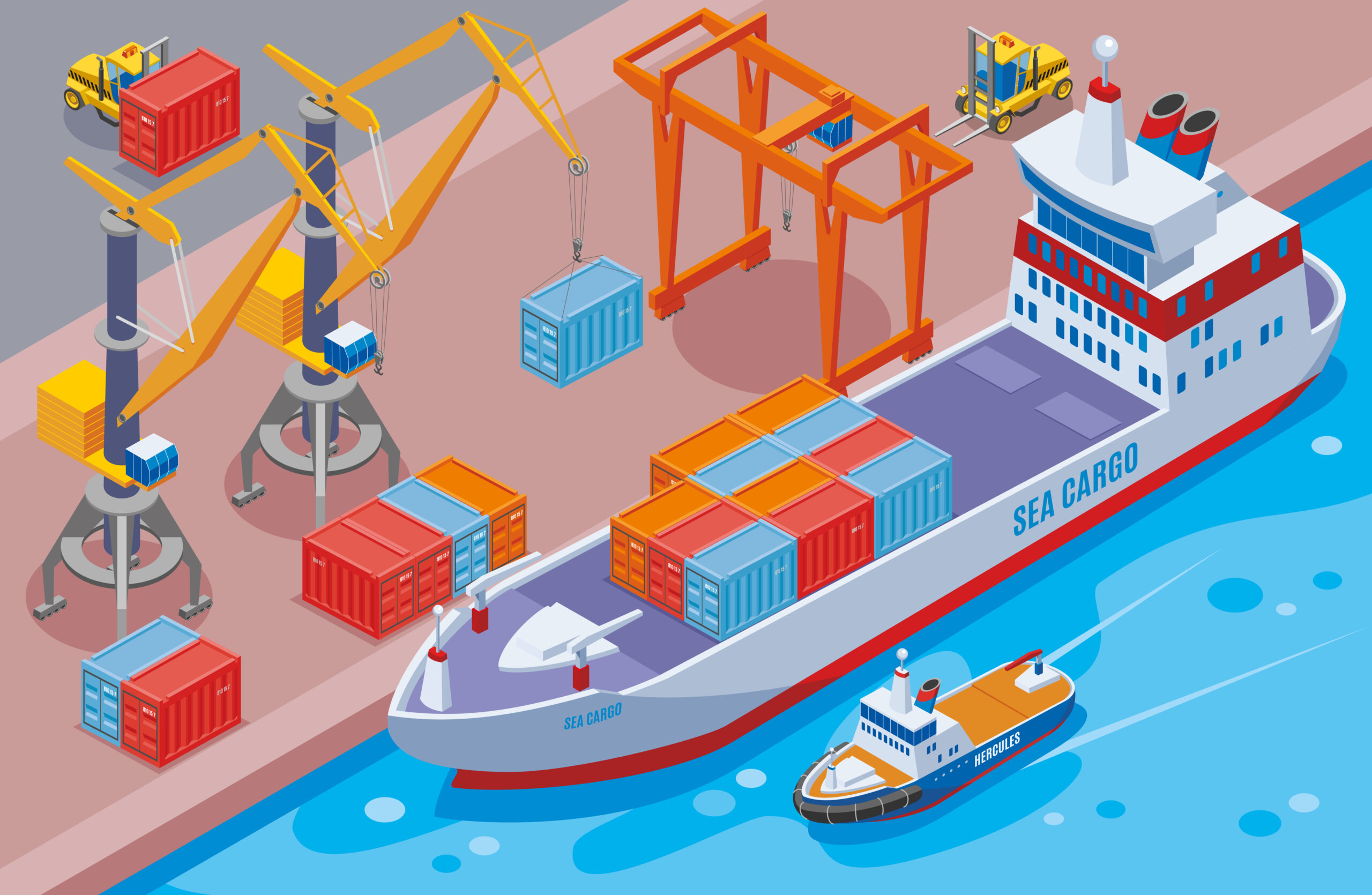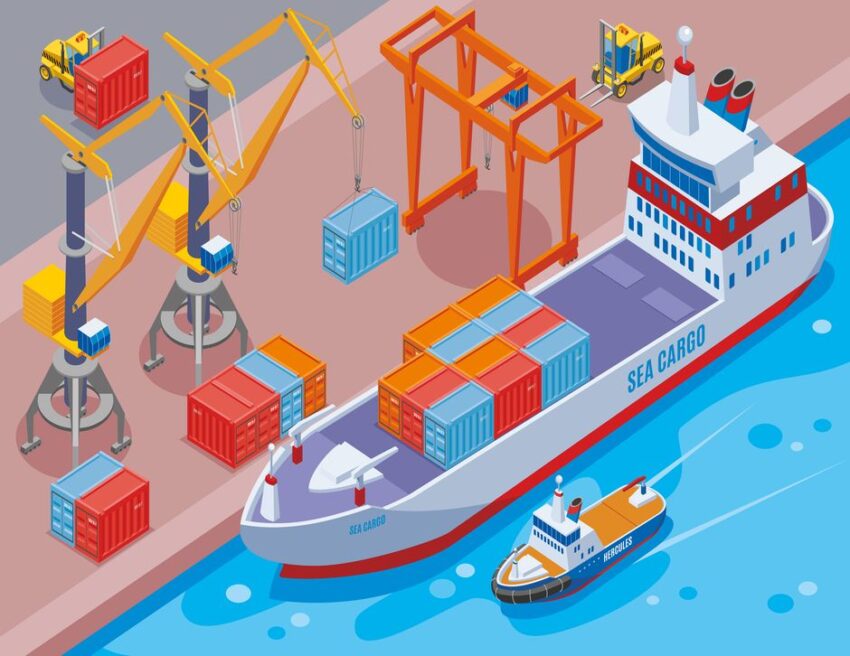The year 2022 could be a profitable one for people working in the container shipping industry. The abatement of the pandemic is expected to make the shipping scenario more stable than in the last two years. The international container export volume is predicted to rise by around 2-3% in 2022. This is not only because of the backlogs from last year but also due to a slow recovery of the maritime shipping sector. Moreover, the port congestion around the world is expected to normalize in the coming months. Nevertheless, this largely depends on the pandemic, since another outbreak of COVID will further deteriorate the situation. In today’s post, we are going to talk about the latest trends in the ocean freight shipping industry in 2022.

Container shipping industry trends in 2022
-
Shipping costs
Although we have seen a decrease in sea freight rates in the last few months, the rates are still nearly 10 times higher than the pre-pandemic level. Moreover, with the Chinese New Year holidays, production has practically halted in China. This makes it very hard to predict if the rates are really going back to normal. According to the economists from Goldman Sachs, the demand and supply balance of the container market will be stable until at least mid-2022. Moreover, container shipping prices are expected to drop by at least 30% in the coming months.
-
Port congestion
According to Alan Murphy from the Research and Analysis firm Sea Intelligence, “All the available data shows that congestion and bottleneck problems are worsening getting into 2022, and there is no indication of improvements as of yet.” Additionally, the port congestion could also have an adverse effect on the reliability, available capacity, and of course on freight rate. Wait times have increased enormously all around the world. The situation is getting really tight at Long Beach and Los Angeles Port that several ships changed their courses and docked at the Ports on the East Coast. On the bright side, the congestion at the ports in China and West Coast, USA, could somewhat lessen in the coming weeks.
-
Container shortage
The container shipping industry is undergoing a shortage of 40 feet containers due to the spike in demand. Moreover, the large backlog from last year is adding to the problem. Therefore, it can be predicted that the export market will continue to be saturated in 2022. However, there could be a surplus of 20 feet containers, especially in China. To quote Christian Roeloffs, Cofounder and CEO, Container xChange, “We foresee that COVID-19 and its new variants will continue to disrupt the port operations and labour capacity as we progress into the year 2022…Persistent unpredictability is warranted. We’ve also started to observe container prices and leasing rates going down. Once prices slide significantly, they risk crashing. If we look at the current demand, we see that the demand for containers hasn’t increased significantly.”
-
Digitization of services
The global pandemic greatly accelerated the digitization of the interactions between the client and the supply chain. As per a forecast by Grand View Research, digital transformation will majorly affect the small and mid-sized players in the freight forwarding industry. We are going to see a sharp increase in ERP, inventory management, and data analytics software in the ocean freight shipping industry. Simply put, businesses are concentrating on creating better digital interactions through clients.
At Globalia, our mission is to accelerate the digitization of the work processes of member companies. As one of the leading freight forwarders networks, we launched a groundbreaking tool that allows members to share freight rates and instantly respond to quote requests from customers. Globalia’s member-exclusive TMS FreightViewer has allowed the members to digitize their quote-generation process to cope with client expectations and compete with multinationals.
-
Renewed focus on sustainability
Following the COP26 summit at Glasgow, the sea freight shipping sector is making environmental sustainability one of its top priorities. Maersk for instance is all set to operate the first carbon-neutral ship by next year. Moreover, shipping lines are considering adjustments to alter the fuel mix for lowering operational carbon. Several shipping lines are even working on the creation of wind-powered ships to completely eliminate the use of carbon in the container shipping sector. In other words, the shipping lines are trying to move away from conventional fuel and switch to more sustainable ones.
How the shipping lines are enhancing their operations
The carriers have immensely benefited from the pandemic and are expected to run extremely profitably for the next few years. The biggest shipping lines are using their profits to expand their core business, digitize their processes, and invest in new technologies to gain a competitive edge. The key endeavours of the shipping lines consist of the following:
-
Fleet expansion and new services
The easiest way for shipping companies to deal with the space shortage is the acquisition of new ships. Shipping lines are investing new and second-hand vessels for fleet expansion. This is a significant step to deal with the industry challenges along with the threat from the competition. CMA CGM for example has acquired 10 ice-breaking container vessels to fortify its presence in the Baltic region. Shipping lines like Maersk and CMA CGM are not only expanding their fleet but even investing in airplane fleets. After acquiring 12 new cruise ships, the Mediterranean Shipping Company is already venturing out into the cruise ship industry.
-
Greater control over the supply chain
The disruption caused by the pandemic prompted many players in the sea freight shipping sector to take steps to gain better control of the functioning of their entire supply chain. For this reason, some shippers are even investing in acquiring warehouses, port terminals, and logistics companies. This is allowing them to offer more integrated end-to-end transportation solutions.


